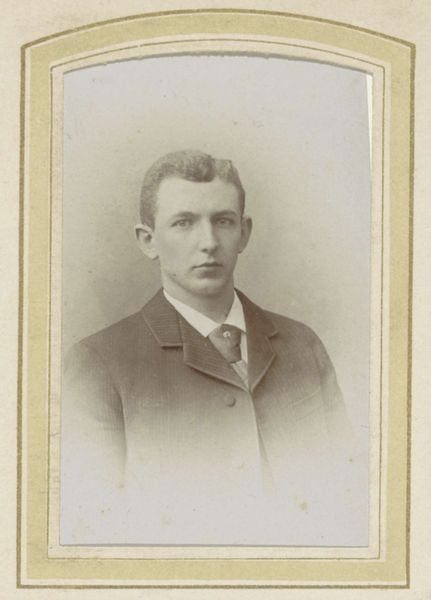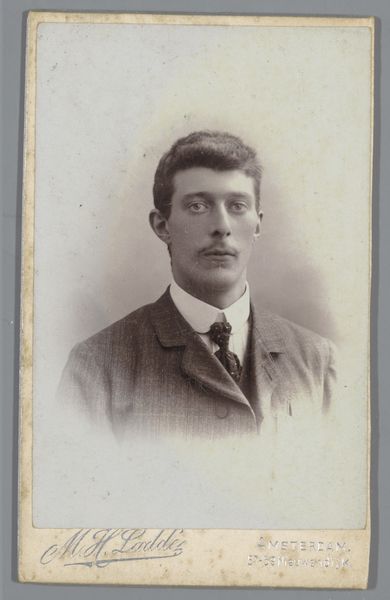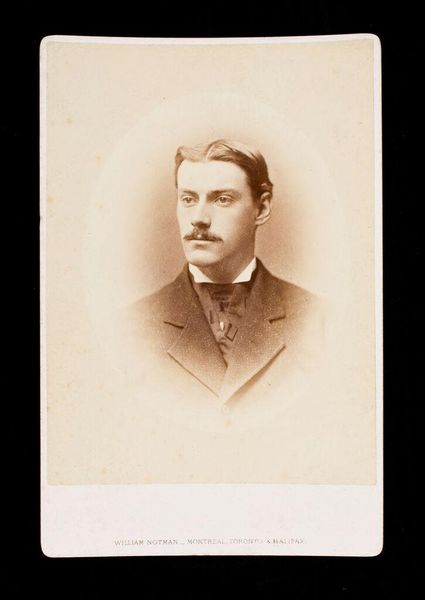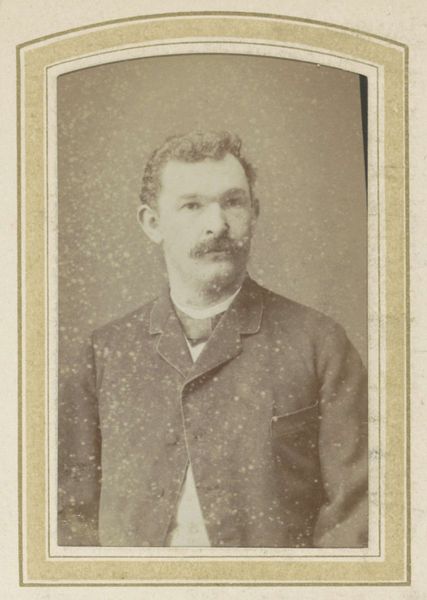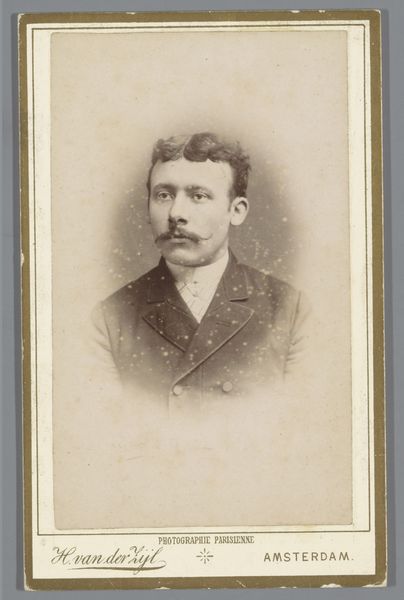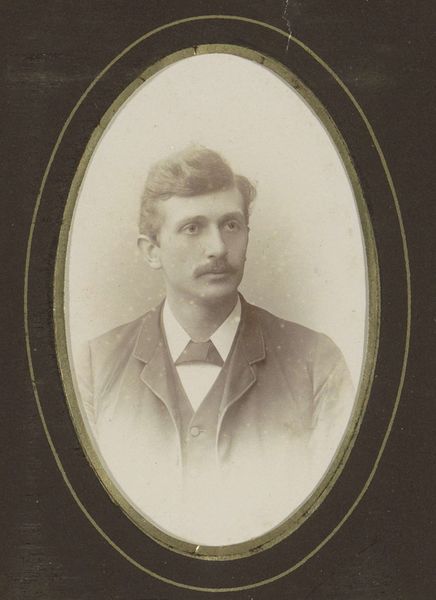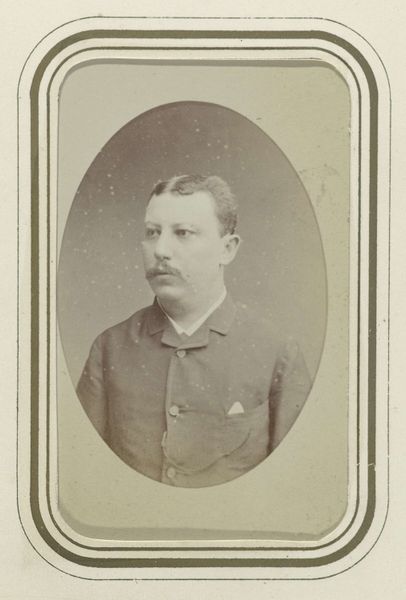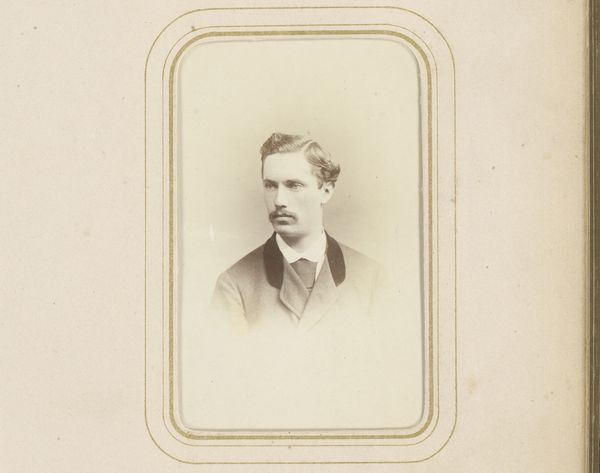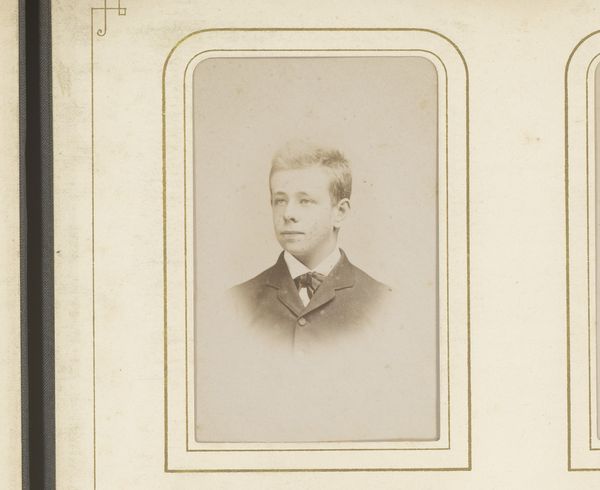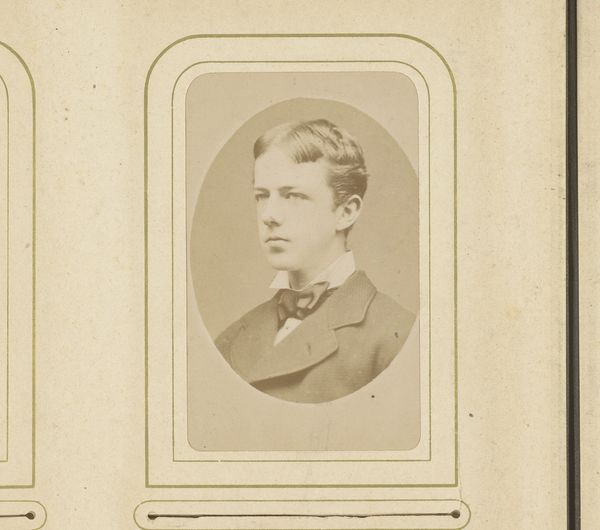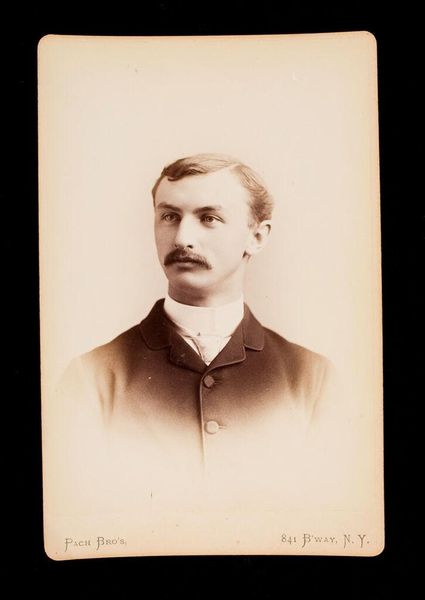
photography, gelatin-silver-print
#
portrait
#
photography
#
historical photography
#
gelatin-silver-print
#
academic-art
#
realism
Dimensions: height 80 mm, width 54 mm, height 296 mm, width 225 mm
Copyright: Rijks Museum: Open Domain
Editor: This is "Studioportret van een man met een snor en stropdas," or "Studio Portrait of a Man with a Moustache and Tie," taken around 1863-1866 by Albert Greiner. It's a gelatin-silver print, a photographic process popular at the time. I'm struck by how formal it is. He's got that serious look and tightly knotted tie. How do you see this work? Curator: The formality, as you observe, is quite telling. Studio portraits like this were a new form of social currency in the mid-19th century. They democratized image-making to an extent, moving portraiture beyond the realm of the wealthy and allowing the middle class to participate in a form of visual representation that had historically been reserved for elites. Editor: So it was a kind of status symbol? Curator: In a way, yes. Consider the context: Photography was still relatively new. To sit for a portrait in a studio, carefully posed, and then circulate these prints - cartes de visite - was a powerful way of constructing and projecting an image of oneself within society. Who got to be seen, and how they were seen, became part of the social fabric. How do you think these portraits affected the more traditional forms of painting? Editor: It's interesting to think about how photography challenged painting. I imagine painters had to adapt and perhaps explore different kinds of representation. Curator: Precisely. The rise of photography didn't kill painting, but it certainly pushed it in new directions, toward abstraction, impressionism, and other movements that sought to capture something photography couldn't – emotion, subjective experience. Think about the relationship between the portrait here and the power structures of that era. It's not just about one man; it's about a shifting social landscape. Editor: I hadn't thought of it in terms of social power dynamics, but that makes a lot of sense. It's not just a picture; it's part of a much larger story about how society was changing. Curator: Exactly. That’s what makes these seemingly simple portraits so fascinating and complex. Editor: Thank you. I see the portrait in a completely different light. It's been insightful!
Comments
No comments
Be the first to comment and join the conversation on the ultimate creative platform.
